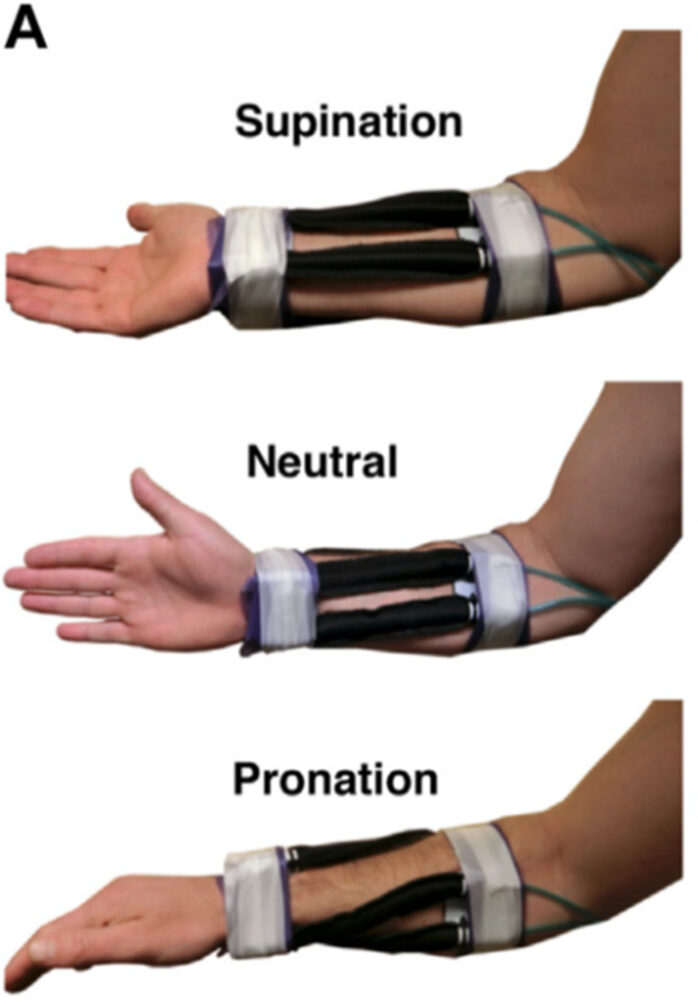CHOC has helped launch a study into soft wearable robots for children with movement disorders.
The research project, which began Oct. 1, 2022, is funded by a nearly $1.5-million, four-year grant from the National Science Foundation.
CHOC Chief Scientific Officer Dr. Terence Sanger is co-primary investigator of the study, and a former postdoctoral student of his, Jonathan Realmuto, is primary investigator.

Realmuto and Sanger worked together on an origami-style face mask after the COVID-19 pandemic hit, and their new collaboration showcases one of CHOC’s missions: to offer patients and their families access to cutting-edge pediatric research that can’t be found anywhere else.
The grant was awarded to the Regents of the University of California at Riverside, where Realmuto is an assistant professor in mechanical engineering. He recently joined UCR’s faculty after completing his post-graduate work at UC Irvine.
Jun Sheng, an assistant professor in mechanical engineering at UCR, is co-primary investigator of the study with Dr. Sanger.
Improving independence for kids with movement disorders
Upper-limb wearable robots use body-mounted sensors and actuators to monitor the human user and predict intention to dynamically adapt and provide physical assistance. They’re being developed to improve the independence of people with movement impairments.
“We want to create things for people who can’t, for example, open doors or pour themselves glasses of water or brush their teeth – things most people take for granted,” Realmuto says. “We essentially want to control our soft robots to behave like biological muscle – that’s the novelty of our proposal.”
Wearable robots – made of textile-based fabrics that include a pressurized air bladder to create different motions – could have broader applications beyond helping people with movement disorders, Realmuto notes.

For example, they could be useful in providing physical assistance to the elderly and for deployment in manufacturing, nursing, and other industrial sectors.
The technology probably still is 10 years away from being widely available, Realmuto says.
He and Dr. Sanger are working on creating a prototype that would slip over forearms.
“When we started talking about this project,” Dr. Sanger says, “I said the basic requirement for any device worn by a child is it has to be lightweight, silent, and purple – to look like a Power Ranger or Transformer. We haven’t achieved the purple yet. The prototypes are still beige.”
Realmuto brings to the project his expertise in mechanical engineering, and Dr. Sanger, a neurologist who has a doctorate in electrical engineering, is the expert in control signal processing and muscle physiology.
Control is key
To date, no one’s figured out a good way to control wearable robots, Realmuto says.
That will be a key focus of the research.
“We like soft robots because they’re pliant and safe and for all these reasons it actually makes them hard to control,” Realmuto notes.
“What we’re essentially trying to do is leverage biological control principles – meaning we’re going to try and use how biology controls muscles – and translate and replicate that on the robotic hardware,” he explains.
Part of the research will include coming up with control algorithms that are stable and safe for people, he says.
Promising preliminary results for CHOC’s study on wearable robot
CHOC will supply the pediatric patients for the research project, which will include three distinct experiments in groups of 20 pediatrics patients as well as 20 control participants.
To support their application for the NSF grant, Realmuto and Dr. Sanger published a research paper in June 2022 in the journal Frontiers in Robotics and AI.
Their paper, “Assisting Forearm Function in Children with Movement Disorders via a Soft Wearable Robot with Equilibrium-Point Control,” yielded promising preliminary results after tests were performed on seven children between 8 and 22 years old who had cerebral palsy or an acquired static motor deficit.
That study revealed that a soft wearable robot, when active, reduced user effort on average by 14%.
“The results provide a strong indication that the wearable robot reduced user effort,” the study concluded.

Learn about pediatric research and clinical trials at CHOC




